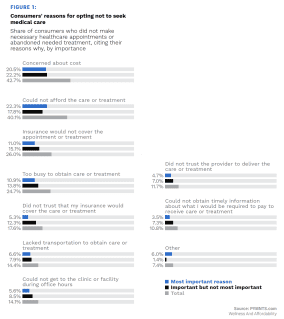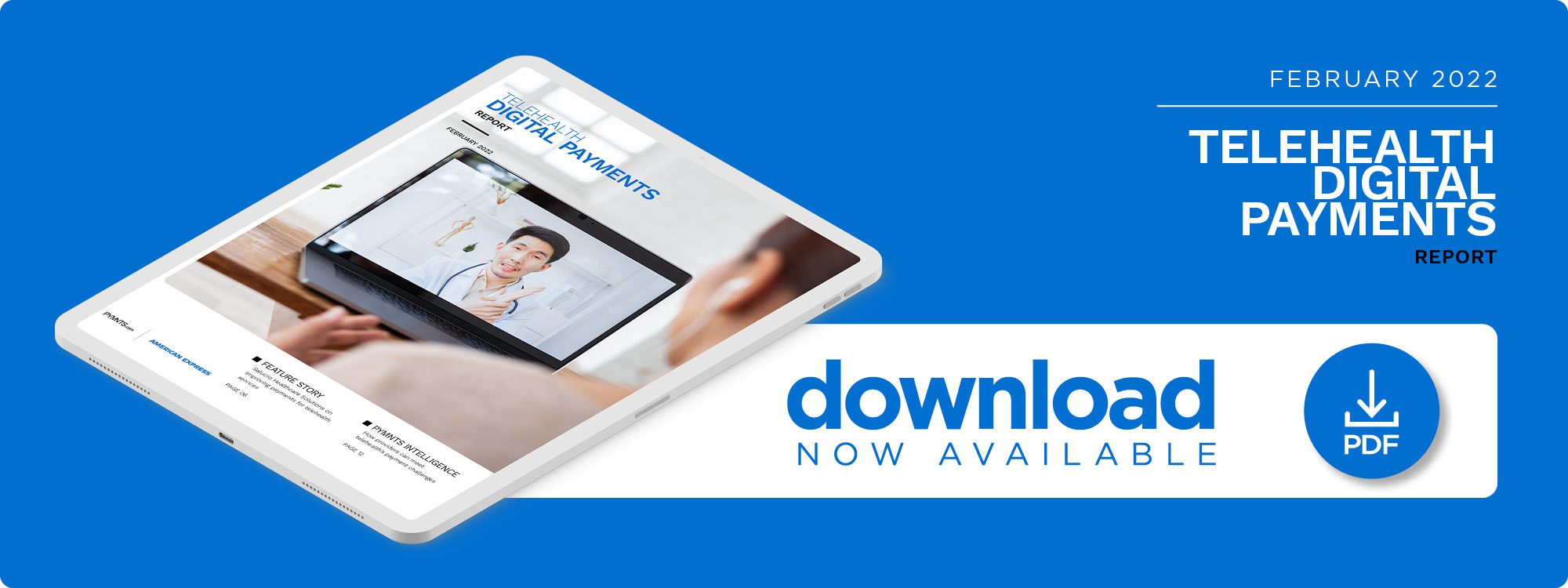PYMNTS Intelligence: Meeting the Payment Challenges of Telehealth

The pandemic rocked the healthcare industry to its core in ways that went beyond it being the largest public health crisis in more than a century. Patients flocked to telehealth in record numbers as stay-at-home recommendations went into effect and hospitals limited the availability of routine or voluntary procedures. A November 2021 study found that only 17% of patients leveraged telehealth services before the pandemic, but 47% reported using it for the first time since the health crisis began.
Payments became one of the major challenges of telehealth usage in the U.S. Healthcare providers not only began to offer more digital payments during the pandemic but also had to navigate myriad complexities around telehealth inherent in U.S. healthcare, such as insurance copays and variable reimbursement from federal assistance programs, including Medicare and Medicaid.
This month, PYMNTS explores the payment challenges facing the telehealth field and how telehealth providers and other players in the industry can adjust their payment practices to adapt.
Telehealth’s Payment Complications
More than half of consumers in a recent study reported that the pandemic affected how they pay healthcare providers, with digital channels playing a larger role. Contactless debit and credit cards, mobile wallets and online portals or bill payment were frequent choices, and 20% fewer patients reported paying at the provider’s office.
Despite telemedicine’s convenience during pandemic restrictions, however, cost and reimbursement issues — for both providers and consumers — have emerged as powerful challenges that need solutions to ensure the future of these services.
One of the biggest points of contention for providers has been that Medicaid and Medicare have not reimbursed telehealth equivalently with on-site visits. Patients have also reported issues such as service limitations and difficulty accessing remote care. A 2021 survey found that patient satisfaction with telehealth services declined from 2020, with patients citing limited services and lack of awareness of costs as the most frequent hurdles to access.
A recent PYMNTS study confirmed that costs continued to pose a barrier to consumers’ telehealth access during the past 12 months. One-third of consumers reported opting out of necessary appointments or abandoning needed medical treatment, predominantly for cost-related reasons: 43% of those who opted out of visits were concerned about the cost, 40% said they could not afford the care or treatment and 26% said their insurance would not cover the visit.
How Telehealth Providers Can Adapt Their Payment Protocols
These issues have contributed to healthcare practices’ revenue losses during the pandemic, so it is in providers’ interest to deploy payment innovations that make telehealth access and bill payment easier and hassle-free for patients.
One of the most important steps to improving the payment process for telehealth services is to increase its transparency, as healthcare payments can quickly grow incredibly complicated when factoring in insurance, copays and federal aid.
Patients have a variety of different preferences for when they wish to pay for medical appointments and procedures, for example, with 50% paying after the procedure, 20% paying during the visit and 18% paying before the visit. Just 30% of consumers in a recent PYMNTS study said they received cost estimates before treatments, but 89% said they would prefer to know the total bill and make a payment ahead of time.
Offering payment choice is also crucial for streamlining and improving the telehealth experience. The ability to pay for a visit quickly and through their preferred method was a “very” or “extremely” important factor for 57% of patients when determining whether they were satisfied with a healthcare experience, and 26% said they would consider switching healthcare providers if an alternative provider offered a range of payment methods.
Another PYMNTS study found that enabling patients to make payments through a website and offering them payment plans could help providers retain the 22% of private practice patients and 13% of group practice patients who said they had difficulty paying their bills.
Other PYMNTS data indicated that 47% of patients with out-of-pocket costs do not know if their healthcare providers offer affordable payment plans, but more than half of those who were aware of such options took their providers up on these offers. Affordable payment alternatives were in high demand, with 45% of all patients saying they would be interested in using these payment plans in the future, and 41% of users saying these options helped them with their other bills and expenses as well.
Healthcare payments in the U.S. are complicated in the best of times, and a shift to telehealth amid an unprecedented medical crisis has made them even more challenging. Offering payment transparency and choice, including affordable payment plans, could be a crucial step toward reducing the barriers to care and keeping patients coming back, both virtually and in person.

